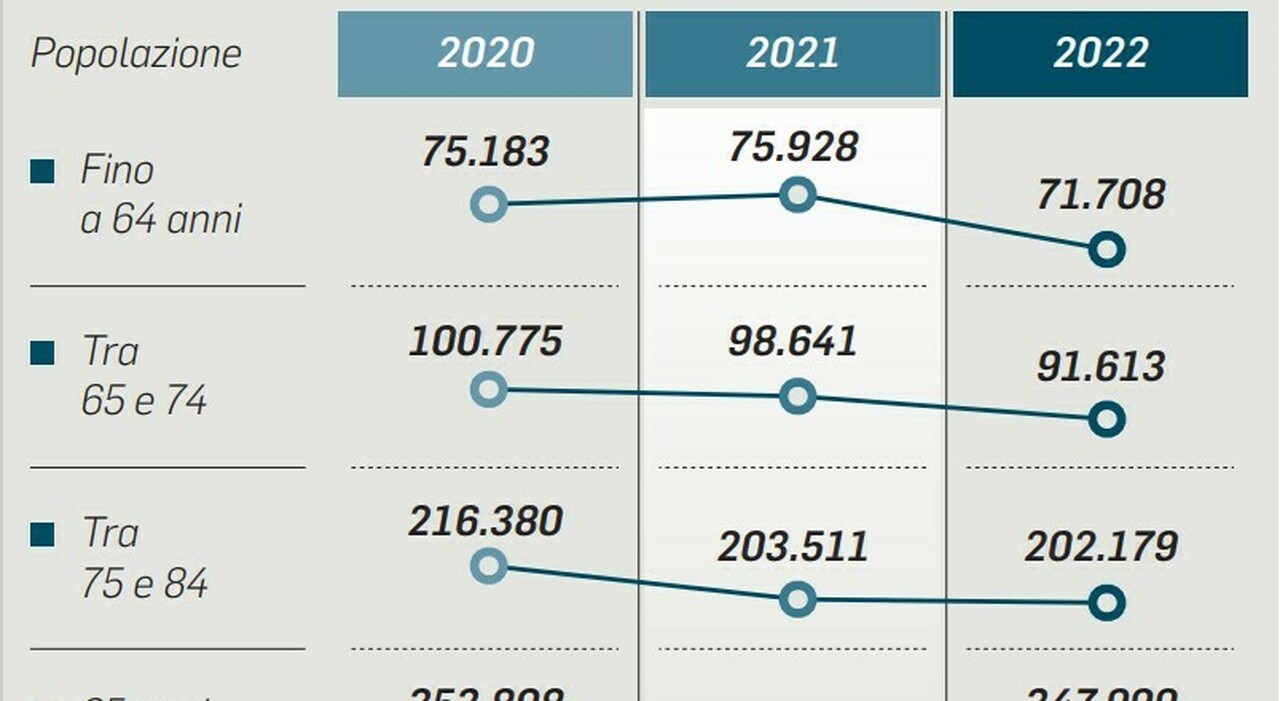Mortality rears its head. After the drop following the historic peak of the Covid year, the number of deaths in our country rose again slightly in 2022, remaining well above the average level of the period preceding the pandemic. The increase, which emerges from the first provisional data of Istat, however essentially involves the very elderly population, while for the other age groups the trend is different, with a marked decrease compared to 2021. The phenomenon will have to be analyzed in more detail , but probably different factors weighed on the numbers: from the tail of Covid, to the heat wave in July, up to the flu in the last few weeks of the year.
THE METHOD
The data are those that Istat collects on a daily basis by drawing on the National Registry of the resident population (Anpr) and the Tax Registry, and then disseminates in advance of the annual demographic balance: a custom born precisely following the pandemic explosion to allow a more timely analysis of the phenomena in progress. Comparing the figures for 2022 with those of previous years – elaborated according to the same methodology – shows a recovery in mortality which is concentrated in the over eighty-five age group. More in detail, last year it recorded a total of over 713,000 deaths, about 4,500 more than in the twelve months of 2021; period in which there was a visible decrease compared to the record of 2020 (746,000 deaths, again calculated using the daily data from Anpr source).
The overall figure is the result of a differentiated trend between the various age groups. Let’s consider the population up to 64 years of age: the number of deaths (just under 72,000) decreased in absolute value compared to the previous year by about 4,000 units; the trend is negative even if compared to the weight of this demographic component. In short, no anomalous trend is recorded between minors and adults. Even among those aged between 65 and 74 there is a noticeable reduction, while in the range from 75 to 84 the number is slightly increasing, but this is essentially an optical illusion because the relative population has in the meantime immediately increased.
ANALYZES
Instead, let’s look at the situation for those aged 85 and up. The absolute number of deceased in 2022 rose from 331,000 to approximately 348,000: a value not far from the almost 354,000 recorded in 2020. The mortality rate compared to the weight of this component of the population also follows a similar trend, albeit slightly less marked. What happened? Accurate analyzes can be made at a later stage, with more detailed data (also on the causes of death) but in the meantime it can be observed that the three months with the highest mortality were January, July and December. So among the factors that probably had an impact are Covid which was still being felt at the beginning of the year (together with other seasonal diseases) the heat peak in the summer and at the end of 2022 the strong spread of the flu. A clear rise in the so-called “excess mortality” was recorded in December in many European countries.
Excess mortality measures precisely the difference between expected deaths (based on the average values of previous years) and actual ones. In this sense, the two-year period 2021-2022, despite the decline compared to the year in which Covid broke into the scene, remains significantly above the 2015-2019 average; period characterized by almost 646,000 overall deaths, of which “only” 297,000 referred to the population aged 85 and over. However, it should be noted that in the coming decades the number of deaths is destined to increase steadily simply due to the growing weight of the ultra-elderly in the total population.
I TERRITORY
Finally, the Istat data also allows for a geographical analysis: the recovery in mortality is localized above all in the North, particularly in Regions such as Lombardy, Liguria and Piedmont, while Emilia-Romagna and Friuli are bucking the trend. Instead, the Center shows a more modest increase in line with the national average (in Lazio there is a very slight decrease). On the contrary, there is a reduction in mortality in the South: the Regions that show relatively more intense declines are Puglia and Sicily. It should be remembered that the northern territories in 2021 had experienced a sharp decrease in mortality after the unprecedented leap of 2020, while in the South and on the islands the trend had been the opposite.
© breaking latest news
